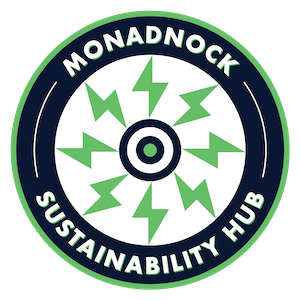By John Kondos, MSH Board Member
Originally Published in The Monadnock Shopper News, Green Monadnock column, November 2022.
For lighting and warmth, we’ve gone from candles and wood to whale oil and coal and on to oil and natural & fracked gas. At each stage, there were lower prices and benefits. Oil came along in time to prevent wiping out whales and it revolutionized transportation. Cheap fracked gas, along with renewables, have replaced a lot of dirty coal. Then Putin’s war in Ukraine and the sanctions cut oil & gas supplies which is behind the recent surge in oil, coal, and NH electricity prices.
There are many more new options to save money and reduce our dependence on volatile fossil fuels. It is extremely risky to ignore that burning fossil fuels releases greenhouse gasses that act like a blanket, trapping the sun’s heat and raising temperatures; some NH greenhouse gas risks include:
- Warmer winters with less snow effects sugaring, logging, and outdoor recreation.
- By 2100, winter and spring precipitation is projected to increase by 10-15% with little change in summer and fall precipitation. With more days above 90º, droughts will challenge farmers.
- Heat waves and increasing exposure to vector-borne diseases (infections transmitted by ticks, mosquitoes, etc.) pose significant health risks and costs.
- Influxes of climate refugees seeking shelter will stress our infrastructure & communities.
The good news is wind and solar are growing fast (solar was 50% and wind was 25% of the new power-generation capacity in 2021), producing 11% of global power generation (1). Sadly, due to the Covid demand rebound and Putin’s war, coal ended its long decline contributing to the increase in the power sector’s carbon dioxide emissions of 7%. Solar and wind are growing because they are cheaper than fossil fuels and as storage costs come down, reliable 24/7 clean energy supply is expanding.
The Inflation Reduction Act (IR Act), which targets lowering the costs of prescription drugs, health care, and energy, is the most aggressive action the US has taken to confront the climate crisis so far. The Act’s energy initiatives will lower consumer energy costs, increase energy security and reduce greenhouse gasses. Here are some highlights; please consult https://bipartisanpolicy.org/blog/inflation-reduction-act-summary-energy-climate-provisions/ and other reliable sources for details.
The efficiency & weatherization incentives include both tax credits and rebates. Many are capped on an annual basis, so you’ll need to spread out home improvements over a few years to pay the least out of pocket.
- Tax credits include 30% for weatherization, up to $1200 annually, starting in 2023; also $2000 for heat pumps, biomass boilers, etc.
- Rebates include up to a total of $14,000 for home efficiency upgrades. These rebate recipients must earn less than 150% of median local income.
For solar, the IR Act restores the 30% tax credit until 2032. Recognizing the value of energy storage, the Act raises the tax credit to 30% for batteries that store at least 3kWh of electricity.
The electric vehicle (EV) tax credit is complex, but it is available at the time of sale, so it will act as a rebate starting in 2024. The EV tax credit:
- Requires vehicles to be assembled in North America; half, $3750, is available if the battery components are built here and the other $3,750 requires critical minerals extracted, processed, or recycled here or in countries with which the US has a free trade agreement.
- Only cars under $55,000 or SUVs, vans, and pickup trucks under $80,000 are eligible for the credit. The income cap for the credit is $150,000 for single filers, $225,000 for the head of household, and $300,000 for joint filers.
- There’s also a credit for used EVs.
We can accelerate the transition to clean energy and minimize the warming or make the world more dangerous and expensive for future generations. While the IR Act is projected to reduce emissions by 40%, further action is needed to meet our goal of halving US emissions by 2030.
Energy efficiency, solar, and EVs save you money. These incentives make these investments more attractive. Harvesting and storing local, free fuel from the sun provides energy security in the face of the risks from greenhouse roulette.
(1.) The 2022 Power Transition Trends report by BloombergNEF
John Kondos is a founding member of Home-Efficiency Resources, the Monadnock Sustainability Hub, and the Monadnock chapter of Citizens Climate Lobby.

